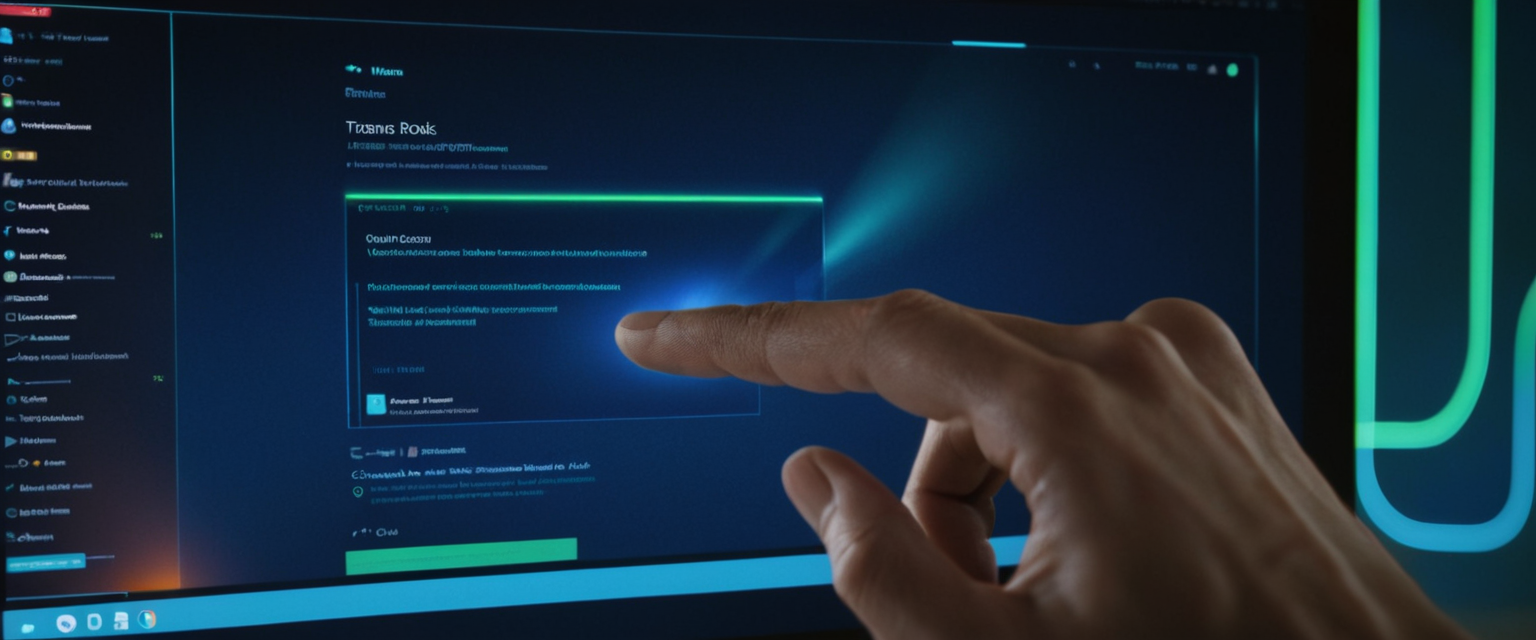
WebRTC has fundamentally transformed how real-time communication occurs within web browsers, enabling direct peer-to-peer video, audio, and data transmission without requiring plugins or external software installations. However, the capability to access sensitive hardware resources such as cameras and microphones introduces substantial privacy and security considerations that developers and users must carefully manage. The WebRTC specification and browser implementations have evolved to address these concerns through a multi-layered security architecture that combines mandatory encryption protocols, explicit user consent mechanisms, permission persistence models, and browser-based sandboxing technologies. This comprehensive analysis explores how WebRTC manages camera access in browsers, examining the technical implementation of permission systems, the security protections built into modern browsers, the encryption mechanisms that protect media streams, the privacy implications of device information exposure, and the practical configurations available to both developers and end users across different browser platforms.
The WebRTC Media Device Access Architecture
Core API Components and Request Flow
The foundation of WebRTC’s camera and microphone access mechanism rests upon the MediaDevices interface, which is accessed through the `navigator.mediaDevices` object in JavaScript. This interface provides developers with standardized methods to enumerate available media devices, listen for device changes, and request access to media streams. The most commonly used method is `getUserMedia()`, which returns a promise that resolves to a `MediaStream` object containing the requested media tracks when permission is granted. When a developer calls `getUserMedia()` with a constraints object specifying video and audio requirements, the browser triggers a permission request dialog that requires explicit user action before the media devices become accessible to the web application.
The permission system operates through a carefully designed flow that prioritizes user agency and privacy. When `getUserMedia()` is invoked, the browser first checks whether the requesting page is loaded in a secure context, which typically means the page must be served over HTTPS. For development purposes, `localhost` and `file:///` URLs are considered potentially trustworthy origins, but production deployments absolutely require HTTPS encryption. Once the secure context requirement is verified, the browser prompts the user with a clear permission request dialog that explicitly asks whether to allow the website access to the camera and microphone. The user can then choose to grant access, deny access, or ignore the request entirely. If the user grants permission, the promise resolves with a `MediaStream` object containing video and audio tracks. If permission is denied, a `PermissionDeniedError` is thrown. If no matching devices are found, a `NotFoundError` is thrown instead.
The `MediaStreamConstraints` object passed to `getUserMedia()` allows developers to specify precise requirements beyond simply requesting camera and microphone access. Developers can request specific device IDs to access particular cameras or microphones on a system, define minimum or maximum video resolution parameters, enable audio processing features like echo cancellation, and specify other media quality parameters. This constraint system enables developers to tailor their applications to specific hardware capabilities while ensuring that applications degrade gracefully when hardware meeting those constraints is unavailable. For example, an application might request a minimum video resolution of 1280×720 pixels and enable microphone echo cancellation, with fallback behavior if these constraints cannot be satisfied.
Device Enumeration and Information Access
The `enumerateDevices()` method provides developers with a way to discover what media devices are available on a user’s system. This method returns a promise that resolves to an array of `MediaDeviceInfo` objects, each representing a media input or output device such as a camera, microphone, or speaker. Each `MediaDeviceInfo` object contains properties including `deviceId`, `kind`, `label`, and `groupId`. However, the WebRTC specification implements a critical privacy protection mechanism: device enumeration is only allowed after the user has granted permission to use media devices. If a page attempts to call `enumerateDevices()` before the user has granted permission, the method returns devices with empty labels, making the enumeration effectively useless for tracking purposes. This “use first, list later” principle prevents malicious websites from building device fingerprints to track users across sessions without their knowledge.
The reasoning behind this privacy protection is compelling. If websites could freely enumerate all devices connected to a user’s computer before obtaining permission, they could build stable fingerprints based on which combination of cameras, microphones, and speakers are present. These fingerprints would persist across browser sessions and could be used to track users even if they delete cookies or disable other tracking mechanisms. Browser vendors recognized this threat and implemented the restriction that prevents device enumeration until after the user has granted access. This design decision forces websites to request permission before gaining access to identifying information about user hardware, establishing a privacy-preserving default.
Permission Models and User Consent Across Browsers
One-Time vs. Persistent Permission Frameworks
The evolution of browser permission models for camera and microphone access demonstrates the tension between user convenience and privacy protection. Historically, different browsers implemented permission systems inconsistently. Chrome implemented persistent permissions by default, meaning once a user granted access to a website, subsequent visits would automatically allow access without prompting. Firefox and Safari, by contrast, required users to grant permission each time they visited a site, treating each session as a separate authorization request. This fragmentation created confusion for users and complicated development because applications had to account for different permission persistence behavior across browsers.
The situation changed significantly with the emergence of one-time permissions as a standardized approach. One-time permissions grant access to media devices for only the current page session, with the browser forgetting the permission once the user closes the page. Chrome adopted this model starting with version M116, making one-time permissions the default option. Firefox and Safari had already implemented one-time permissions as their default behavior. This convergence represents a philosophical shift in browser security: browsers now prioritize giving users more granular control over privacy at the cost of slightly less convenience for repeat visitors to the same site.
The motivations behind this shift are rooted in genuine security concerns. Users may not be comfortable making permanent decisions about which websites can access their cameras and microphones. The risk of untimely recording is a particular concern—users might feel more comfortable if they know recording cannot commence without their active involvement in each session. Additionally, the `getUserMedia()` API does not require transient activation by default, meaning background tabs could theoretically activate camera or microphone access without the user’s immediate knowledge. One-time permissions force websites to work without persistent permission, pushing them toward designs where users must actively trigger media access within each session rather than relying on background activation.
Browser-Specific Permission Implementation
The three major browser engines—Chromium (used by Chrome, Edge, and Brave), Firefox, and WebKit (used by Safari)—have implemented slightly different permission models that developers and users must understand. Chrome historically implemented persistent permissions only, meaning sites could request permission once and then use the camera or microphone on subsequent visits without prompting. However, starting with Chrome version M116, one-time permissions became available, though not necessarily the default in all configurations. Chrome allows sites to request permission for all devices of a particular type rather than requiring per-device authorization. Once a user grants Chrome access to a camera, the site has access to any camera on the system without requesting permission again for each specific device.
Firefox takes a different approach by granting permissions on a per-device basis. If a user grants a website access to one camera, that website must request separate permission to use a different camera. However, Firefox recently added the ability to authorize all cameras of the same type simultaneously. Firefox’s permission model is more restrictive by default but offers users finer control over which specific devices websites can access. Firefox makes one-time permissions the default, requiring users to grant permission with each new session.
Safari implements one-time permissions exclusively, with no option for persistent permission persistence. Each time a user visits a website requiring camera or microphone access, Safari prompts for permission. This strict model prioritizes privacy by design, ensuring that even trusted websites cannot automatically access media devices without explicit per-session authorization. Safari’s approach represents the most privacy-protective default, though it comes with the trade-off of requiring users to grant permission more frequently.
Managing Permission Persistence and Discovery
For sites where permissions do persist, browsers provide mechanisms to modify and review permissions through their settings interfaces. In Chrome, users can navigate to Settings > Privacy and Security > Site Settings > Camera or Microphone to view which sites have been granted permissions and modify those settings. Users can add sites to either an allow list or a block list, configure default behavior, and remove permission grants for specific sites. The Chrome interface allows users to select a default camera or microphone and switch between devices through a dropdown menu.
Firefox provides similar functionality through Settings > Privacy & Security > Permissions section. Users can review camera and microphone permissions by site, use Allow/Block toggles to modify permissions, and remove individual site permissions entirely. Firefox also provides an address bar method where users can click the permissions icon to quickly view and adjust the permission status for the current site. Additionally, Firefox allows users to use the Page Info window (accessed through Ctrl+I or Command+I) to set custom permissions for individual sites.
Safari’s permission management happens through System Preferences rather than within the browser itself. macOS users must navigate to System Preferences > Security & Privacy > Camera or Microphone to grant permission to Safari as an application. Safari does not maintain a list of sites with permission grants because it treats each session as a new authorization request.
Microsoft Edge follows a similar model to Chrome, with Settings > Privacy and Security > Site Settings > Camera or Microphone providing access to permission management. Users can see a list of sites with permission grants and modify those permissions through an Allow/Block interface. Edge also supports Permissions Policy through HTTP headers, allowing administrators or developers to control camera and microphone access through policy configurations.
On mobile platforms, Android and iOS implement permissions through their operating system settings rather than within individual browsers. On Android, users must go to Settings > Apps > [Browser] > Permissions to enable camera and microphone access for the browser application. Once enabled at the OS level, individual websites can then request camera and microphone access. On iOS, users manage permissions through Settings > Privacy > Camera or Microphone. These OS-level permissions represent a fundamental security layer that browsers cannot bypass.
Security Protections in Browser Environments
Secure Context Requirements and HTTPS Enforcement
The WebRTC specification mandates that access to media devices is only available in secure contexts, a requirement that has been strictly enforced across modern browsers. A secure context is defined as a page loaded using HTTPS URLs or locally accessed via `localhost`, `127.0.0.1`, or the `file:///` scheme. This requirement means that any attempt to call `getUserMedia()` from an insecure HTTP connection will fail, with `navigator.mediaDevices` being undefined in such contexts. The rationale behind this requirement is compelling: if camera and microphone access were available over unencrypted connections, man-in-the-middle attackers could intercept permission grants or manipulate the permission flow itself.
The secure context requirement has important implications for development. During local development, developers can use `http://localhost` without security warnings because the browser treats localhost as a potentially trustworthy origin. However, any production deployment must use valid HTTPS certificates. This requirement has driven significant adoption of HTTPS across the web and ensures that the encryption layer protecting camera access is guaranteed by the browser’s trust model. Even development environments that use self-signed certificates will trigger browser warnings and require explicit user acceptance before allowing WebRTC APIs to function.
Visual Indicators and User Notification
Browsers are required by the WebRTC specification to display clear, prominent indicators when a camera or microphone is in use, in addition to any hardware indicator lights that may exist on the device. These indicators serve a critical function in protecting user privacy by making it immediately apparent when media devices are actively recording. In Firefox, the URL bar displays a pulsing red icon when recording is underway and a gray icon when permission is granted but recording is not currently active. Chrome displays a red dot on the browser tab when the camera or microphone is in use. These visual indicators must be persistent and obvious so users cannot miss them.
Beyond active recording indicators, browsers also display indicators showing that permission has been granted to use media devices even when the devices are not actively recording. This is important because users should know at a glance which sites have been granted permission to access their sensitive devices. Some users employ camera covers or other physical barriers for additional protection, but the browser-provided indicators serve as the first line of defense by keeping users aware of which sites have permission.
The notification requirement extends to permission prompts themselves. When a website requests camera or microphone access, browsers must display a clear, obvious permission dialog that cannot be dismissed by the website’s JavaScript. The dialog must clearly identify which site is requesting permission and what resources are being requested. Users must have the ability to grant permission, deny permission, or ignore the request. The browser may also offer options to remember the decision or to grant permission only temporarily. These requirements ensure that users maintain control over their media devices and cannot be tricked by confusing UI or hidden permission dialogs.
Browser Sandbox and Origin-Based Security
WebRTC operates within the browser’s sandbox environment, which isolates web applications and prevents them from directly accessing the operating system except through explicitly defined APIs with proper permission checks. This sandbox architecture means that websites cannot directly access camera or microphone devices—they must go through the browser’s permission system and the WebRTC APIs. If a website attempts to access media devices through any unauthorized means, the browser’s sandbox prevents it from doing so. Even if a website contains malicious code, that code runs within the sandbox’s constraints and cannot bypass WebRTC’s permission requirements.
The Same Origin Policy (SOP) further restricts which websites can interact with camera and microphone resources. Each website origin is isolated in its own sandbox, and websites from different origins cannot access each other’s granted permissions or media streams. This means that even if a user grants one website permission to use the camera, other websites cannot access that permission or the resulting media stream. The origin includes the protocol (HTTPS vs. HTTP), domain name, and port number. For example, `https://example.com` and `https://www.example.com` are considered different origins and maintain separate permission grants.
For embedded content loaded through iframes, browser permissions policies further control which frames can request media device access. Developers must explicitly grant permission for cross-origin frames to request camera or microphone access through the `allow` attribute. Without this explicit permission grant, a cross-origin iframe will receive a `NotAllowedError` when attempting to call `getUserMedia()`. This mechanism prevents malicious advertisements or third-party widgets from unexpectedly gaining camera or microphone access.
Encryption and Secure Communication Protocols

Mandatory Media Encryption with SRTP
WebRTC requires that all media streams—whether video, audio, or data—are encrypted using standardized, well-tested encryption protocols that prevent eavesdropping and tampering. Unlike older VoIP and video conferencing technologies that sometimes transmitted media in unencrypted form, WebRTC makes encryption mandatory for all implementations. Video and audio streams are encrypted using Secure Real-time Transport Protocol (SRTP), a protocol specifically designed for protecting multimedia streams in real-time communications. SRTP encrypts each packet individually, ensuring that no one can decode the media without the proper decryption keys.
The specification explicitly forbids the use of unencrypted Real-time Transport Protocol (RTP) in WebRTC implementations. This is not merely a recommendation but a requirement enforced by the Internet Engineering Task Force standards that define WebRTC. This mandatory encryption approach represents a significant security improvement over earlier technologies where encryption was optional or could be disabled. By making encryption mandatory, WebRTC ensures that users’ communications are protected by default, requiring no additional configuration or trust in website operators to enable security.
Data channels within WebRTC are encrypted using Datagram Transport Layer Security (DTLS), a protocol designed to prevent eavesdropping and information tampering. DTLS is essentially TLS adapted to work with UDP packets, providing the same cryptographic protections as TLS but with the lower latency characteristics needed for real-time communications. The security properties of DTLS ensure that any data sent through WebRTC data channels is protected with authenticated encryption, preventing both disclosure and modification attacks.
Secure Encryption Key Exchange with DTLS-SRTP
Beyond simply encrypting media, the WebRTC specification mandates that encryption keys be exchanged securely between peers, preventing attackers from obtaining the keys used to protect communications. The key exchange is performed using DTLS-SRTP, which conducts key negotiation directly between peers on the media plane rather than through a centralized server. This design is crucial because it means that even if a signaling server or network intermediary is compromised, they cannot decrypt the media streams passing through them. The keys are established only between the communicating endpoints, and the application data layer remains encrypted end-to-end.
This approach provides several security advantages. First, it prevents the signaling server from accessing the media being transmitted, ensuring that the server cannot spy on communications even if it is compromised. Second, it prevents network administrators or internet service providers from accessing the content of communications, providing privacy from intermediaries along the network path. Third, it prevents man-in-the-middle attackers from obtaining encryption keys, because the keys are established through cryptographic protocols that detect tampering.
The older SDES (Session Description and Encryption) and MIKEY key exchange mechanisms, which transmit keys through the signaling channel, are explicitly prohibited in WebRTC because they create a security weakness. If the signaling channel is compromised, those key exchange methods would expose the encryption keys to an attacker. DTLS-SRTP avoids this vulnerability by ensuring that keys are never transmitted in the clear, even through the signaling channel.
Signaling Channel Security with HTTPS and WSS
While WebRTC provides end-to-end encryption for media streams, the signaling channel that coordinates the connection setup must also be secured to prevent attackers from hijacking the call setup or manipulating peer information. Signaling typically involves exchanging Session Description Protocol (SDP) messages that describe media capabilities, Session Traversal Utilities for NAT (STUN) server information, and authentication credentials. If this signaling traffic is transmitted over unencrypted connections, attackers can intercept and manipulate it.
The WebRTC specification requires that signaling be conducted over secure connections, typically using HTTPS or WSS (WebSocket Secure). HTTPS uses TLS to encrypt HTTP traffic, while WSS uses TLS to encrypt WebSocket connections. Both mechanisms ensure that signaling information is encrypted in transit and that the communicating parties can authenticate each other through certificate validation. By securing the signaling channel, WebRTC prevents man-in-the-middle attackers from intercepting peer connection details or manipulating the call setup process.
Beyond basic TLS encryption, secure signaling implementations should also protect against additional web-based attacks. Applications should implement Cross-Site Request Forgery (CSRF) protections to prevent attackers from initiating WebRTC sessions on behalf of users. Strict Content Security Policy (CSP) headers should prevent attackers from injecting malicious scripts. HTTP-only, secure cookies with the SameSite attribute should be used for session management. These layered protections ensure that signaling channels are secure not just from network eavesdropping but also from web-based attacks.
Privacy Considerations and Information Disclosure
IP Address Leakage and Privacy Implications
One of the most significant privacy concerns with WebRTC is the potential for the technology to leak users’ real IP addresses even when they are using VPNs or other privacy-protection services. This vulnerability occurs because WebRTC uses Interactive Connectivity Establishment (ICE) to discover the IP addresses through which peers can communicate, including private local network addresses and public IP addresses. When establishing a peer connection, the browser gathers candidate IP addresses—including local network addresses on private networks—and makes these available to the web application and the remote peer.
The privacy concern arises when users employ VPNs or proxy services specifically to hide their real public IP address. VPNs work by routing all internet traffic through a remote server, making it appear to websites that the user’s traffic originates from the VPN provider’s IP address rather than the user’s actual ISP-assigned IP address. However, WebRTC may independently discover and expose the user’s actual public IP address, circumventing the VPN’s protection. Additionally, WebRTC may expose local private IP addresses that users have on their home or office networks, potentially revealing information about their local network configuration and making it possible for attackers on the same network to target their devices.
Different browsers have implemented varying protections against WebRTC IP leakage. Modern browsers increasingly implement mDNS (multicast DNS) protection, which conceals local private IP addresses by registering ephemeral mDNS names and providing those names in ICE candidates instead of the actual IP addresses. This approach prevents websites from seeing the actual local network addresses while still allowing the WebRTC connection to function properly. The browser manages mDNS name resolution internally and does not expose the actual IP addresses to JavaScript code.
Microsoft Edge provides policy controls for managing local IP address exposure through the `WebRtcLocalIpsAllowedUrls` policy, which allows administrators to specify which origins should have access to local IP addresses while all other origins receive mDNS names instead. This gives organizations granular control over which applications can access local network information. Brave provides a WebRTC IP handling policy setting that allows users to choose between exposing all candidates, relaying only through TURN servers, or disabling WebRTC entirely.
Device Information and Fingerprinting Threats
Beyond IP addresses, WebRTC can expose device information that contributes to browser fingerprinting, a technique used to identify and track users across websites. Through `enumerateDevices()`, websites can obtain information about which cameras, microphones, and speakers are connected to a system. While the actual device IDs are hidden to protect privacy, the browser-generated hashes representing device IDs persist across sessions as long as the user doesn’t clear browsing data. The types and number of devices present on a system can be unique enough to contribute to a fingerprint that identifies a specific user.
The combination of multiple identifying characteristics—including device enumeration results, TLS handshake properties, browser user agent, canvas rendering behavior, and numerous other attributes—can create a fingerprint so unique that it reliably identifies individual users even without cookies or other traditional tracking methods. Browser fingerprinting is particularly concerning because users are typically unaware it is happening and have no straightforward way to opt out, unlike with cookies that require consent under regulations like GDPR. Some malicious websites have been known to combine WebRTC device enumeration with other fingerprinting techniques to track users across the web.
To mitigate fingerprinting risks, some users employ anti-fingerprinting browser extensions or enable fingerprinting protection features built into certain browsers. These tools work by either making fingerprints uniform across users (the Tor Browser approach) or randomizing fingerprint components to prevent consistent tracking (the extension approach). Some browsers like Brave and Firefox have implemented native fingerprinting protections that randomize certain identifiers and limit exposure of identifying information. However, these protections must be balanced against legitimate uses of WebRTC that require accurate device information.
Third-Party Context and Cross-Origin Privacy
WebRTC faces particular privacy challenges when used in third-party contexts, such as embedded widgets or advertisements loaded on pages not operated by the website displaying them. A third-party website embedded through an iframe could potentially gather ICE candidates containing IP addresses from multiple visiting users’ networks, creating a record of network topology and connectivity patterns. This information could potentially be used to track users across multiple websites or to fingerprint their network configuration.
To address this threat, the mDNS protection mechanisms discussed earlier specifically recommend that browsers should NOT register mDNS names for WebRTC applications running in third-party or private browsing contexts. This ensures that even if a third-party widget attempts to gather ICE candidates, it cannot obtain actual IP address information that could be used for tracking or network reconnaissance. The number of mDNS hostname candidates itself can provide a fingerprinting dimension, so limiting the number of candidates to a small value based on default routes helps minimize even this residual privacy concern.
Device Management and Enumeration
Practical Device Selection Workflows
Developers face significant challenges in building device selection interfaces that work across different browsers with different permission models and permission persistence behaviors. The fundamental challenge is that different browsers expose different information and different numbers of devices depending on whether permissions are persistent, one-time, or denied. In Firefox, device enumeration works on a per-device basis, so the UI must reflect that different cameras require separate permission grants. In Chrome, device enumeration typically returns all devices of a given type once one device has been granted permission, simplifying the UI but offering less control.
For browsers implementing one-time permissions, websites can no longer rely on persisted permission grants to automatically provide device lists on return visits. A website that previously kept a record of which camera a user had selected could no longer retrieve that list on a subsequent visit without asking for permission again. This creates a problem for user experience: repeat visitors must either go through the permission prompt again or the application must store the device preference in some other way, such as localStorage, while being aware that the actual devices may have changed.
Mozilla researchers and the W3C community have proposed several design patterns for device selection that work across different browser models. One approach is to make device selection secondary and optional. Most users have only one microphone and one front-facing camera, so applications could default to using the first available device and move device selection to an optional settings panel. Users could then select different devices from the settings page after the initial permission has been granted. This approach avoids the need for device enumeration before permission, making it compatible with one-time permissions across all browsers.
Another pattern involves remembering user device preferences in localStorage or similar storage mechanisms, then using the Permissions API to check permission status on return visits. If permission has been previously granted, the application can proceed directly to using the remembered device without re-prompting. If permission is in the “prompt” state, the application can request permission again. This approach requires careful error handling because the remembered device might have been disconnected, but it provides a reasonable user experience.
Handling Device Changes and Disconnections
Applications using WebRTC must handle the reality that hardware configurations change. Users may connect or disconnect cameras, microphones, or other devices. The `mediaDevices` interface provides an event listener for device changes through the `devicechange` event. When devices are connected or disconnected, this event fires, allowing applications to update their device lists and UI accordingly. Applications should listen for this event and update their available device options when changes occur.
When a device that is currently in use is disconnected, the `MediaStreamTrack` becomes `ended`, signaling to the application that the stream is no longer available. Applications should listen for the `ended` event on media tracks and handle device disconnections gracefully by stopping the current stream and prompting users to select a different device. This might involve calling `stop()` on all tracks in the current stream, clearing the video or audio element’s `srcObject`, and then re-requesting permission to use a different device.
Different error conditions require different handling strategies. If `getUserMedia()` is called when no matching devices are connected, it throws a `NotFoundError`. If the user denies permission, it throws a `PermissionDeniedError`. On some systems where the operating system has blocked camera access at the system level, `getUserMedia()` throws `NotAllowedError`. Applications should catch these different error types and provide appropriate user feedback. For `NotFoundError`, the application might display a message asking users to connect a camera. For `PermissionDeniedError`, the application might guide users to the browser’s settings to change permissions.
Cross-Origin iFrame Restrictions
When WebRTC is embedded within iframes, additional permission restrictions apply to prevent third-party content from unexpectedly accessing cameras and microphones. By default, cross-origin iframes cannot request camera or microphone access. To enable this capability, the iframe’s parent document must explicitly grant permission through the `allow` attribute. The syntax for granting camera and microphone access in iframes is straightforward: ``.
The `allow` attribute syntax allows fine-grained control over which origins can access which features. The default allowlist value is `’src’`, which means the feature is allowed only if the iframe’s src attribute matches the specified origin. Developers can use `’*’` to allow any origin, `’self’` to allow only same-origin documents, or specific origins to allow particular domains. A more restrictive policy in the parent document will override a more permissive policy in the child iframe, ensuring that the most restrictive policy always applies.
This protection mechanism prevents malicious advertisements or third-party content from requesting camera and microphone access without the website operator’s explicit consent. Even if an ad network includes code that calls `getUserMedia()`, that code will fail with `NotAllowedError` unless the embedding website has explicitly granted the feature permission through the `allow` attribute. This maintains user security by ensuring that website operators maintain control over which embedded content can access sensitive capabilities.
Practical Implementation and Configuration

Browser-Specific Permission Grant Procedures
Users who wish to grant specific websites access to their camera and microphone can do so through their browser’s settings interfaces, or websites can request permission when needed. For Chrome users wanting to pre-grant permission, the process involves navigating to Settings > Privacy and security > Site settings, then selecting either Camera or Microphone. The permissions page displays default behavior options—typically “Allow sites to ask” as the default setting. Users can click “Allow” for specific sites they trust or “Block” for sites they want to deny access. Users can also select a default camera or microphone from dropdown menus.
Firefox users follow a similar process through Settings > Privacy & Security > Permissions. Firefox displays a Camera section with options to Allow or Block specific websites. Users can check a box to prevent Firefox from asking for permission in the future, or they can remove permissions for specific sites by selecting the site and clicking a remove button. Firefox’s Settings page also allows users to configure which specific camera or microphone is used as the default.
For Android devices using Chrome, users must access Chrome Settings > Site settings > Microphone or Camera. Users can then toggle microphone or camera access on or off and manage which sites have permission. Note that Android also requires system-level permission grants through Settings > Apps > Chrome > Permissions, so camera access must be enabled at both the browser level and the system level.
Safari users on macOS must grant permission through macOS System Preferences rather than within Safari itself. The process involves navigating to System Preferences > Security & Privacy > Privacy > Camera or Microphone, then finding Safari in the list and enabling the toggles for camera and microphone access. This OS-level permission model is simpler in that all camera and microphone access is managed centrally, but it means all websites get the same level of access—there is no per-site permission control.
Blocking WebRTC Entirely for Privacy Protection
Some users are concerned enough about WebRTC privacy implications that they wish to disable WebRTC entirely rather than managing per-site permissions. Firefox provides the most straightforward method for completely disabling WebRTC. Users can type `about:config` in the address bar, accept the risk warning, then search for `media.peerconnection.enabled`. Double-clicking this setting changes its value from `true` to `false`, completely disabling WebRTC.
Chrome and Edge do not provide a simple built-in way to completely disable WebRTC, but users can install browser extensions that disable WebRTC. The WebRTC Control extension for Chrome provides a toggle button that allows users to quickly enable or disable WebRTC. The WebRTC Leak Shield extension provides similar functionality. These extensions work by preventing JavaScript from accessing the relevant APIs—essentially blocking `navigator.mediaDevices` and related WebRTC APIs.
Brave provides WebRTC IP handling controls that allow users to adjust how WebRTC exposes IP addresses. In Brave’s Settings, searching for “webrtc” displays the “WebRTC IP Handling Policy” option. Users can select “Disable Non-Proxied UDP” to force WebRTC to use only relay servers (TURN), which reduces the chance of IP leaks. Alternatively, Brave’s strict fingerprinting protection mode affects WebRTC functionality, and Brave has issued guidance on managing WebRTC behavior for privacy-conscious users.
Mullvad VPN provides detailed guidance for disabling WebRTC across browsers and provides tools for testing whether WebRTC is properly disabled. Users can test their WebRTC status at Mullvad’s connection check page, and if WebRTC is leaking their IP address while connected to the VPN, they can follow platform-specific instructions to disable WebRTC. This guidance has become important for VPN users specifically because WebRTC can circumvent VPN protections if not properly managed.
Developer Configuration of Media Constraints
When implementing WebRTC applications, developers should carefully specify media constraints to request only the capabilities actually needed by their application. Simple applications that just need any available camera and microphone can use minimal constraints: `{video: true, audio: true}`. However, applications with specific requirements should define more detailed constraints to ensure they get suitable media.
For video applications, developers can specify resolution constraints. A request for at least 1280×720 pixels might look like: `{video: {width: {min: 1280}, height: {min: 720}}}`. Developers can also request specific device IDs if they want to ensure a particular camera is used: `{video: {deviceId: {exact: “camera-id-string”}}}`. The `ideal` constraint allows developers to express preferences without failing if the preference cannot be met: `{video: {width: {ideal: 1920}, height: {ideal: 1080}}}`.
For audio applications, developers can enable or disable specific audio processing features through constraints. Echo cancellation can be explicitly enabled: `{audio: {echoCancellation: true}}`. Developers might request specific audio input devices or disable audio processing features that might introduce artifacts for applications requiring high-fidelity audio. The constraint system provides fine-grained control over hardware configuration while gracefully handling situations where preferred constraints cannot be satisfied.
Applications should implement proper error handling for various failure modes. If `getUserMedia()` throws an error, applications should check the error type and provide appropriate user guidance. A `PermissionDeniedError` means the user denied permission, and the application should guide users to the browser settings to change permissions. A `NotFoundError` means no matching devices are available, and users should be prompted to connect appropriate hardware. Other errors should be logged and reported for debugging.
Advanced Security Measures and Emerging Protections
Identity Verification and Authentication
While WebRTC itself does not prescribe specific authentication mechanisms, secure WebRTC implementations require strong identity verification to ensure that users are communicating with the correct peers and not being tricked by attackers who have hijacked the connection setup. The identity layer verifies that each participant in a communication is who they claim to be and that they have the right to initiate calls. This can be achieved through various identity frameworks including OAuth, OpenID, BrowserID (deprecated), Persona, or custom authentication systems.
In a typical authenticated WebRTC flow, users first authenticate with an identity provider or the application’s authentication service. Once authenticated, they receive a token or credential that binds their identity to their WebRTC connection. When initiating a call, the caller’s browser obtains an identity token from the identity server that cryptographically binds the caller’s identity to their peer connection information. The recipient’s browser can then verify this identity assertion before accepting the call, ensuring that the incoming call genuinely comes from the claimed caller.
This identity layer prevents several categories of attacks. It prevents attackers from spoofing peer identities and tricking users into communicating with the wrong party. It provides non-repudiation so that participants cannot later deny having initiated communications. It enables access control by allowing applications to restrict who can initiate calls to whom. When properly implemented, identity verification ensures that the cryptographic security provided by DTLS-SRTP is applied to communications with the correct peers, not with attackers who may have hijacked the connection setup.
TURN Server Configuration and Security
TURN (Traversal Using Relays around NAT) servers play a crucial role in WebRTC connectivity by relaying media between peers when direct peer-to-peer connections are not possible due to network restrictions. However, TURN servers represent potential security and privacy vulnerabilities if not properly configured. Because media is relayed through TURN servers, those servers could theoretically observe the encrypted media streams and see which users are communicating with which peers.
WebRTC’s encryption design mitigates this concern by ensuring that TURN servers only see the encrypted media layer and cannot access the encryption keys or decrypt the media. A TURN server processes packets at the UDP network layer and simply forwards them between peers without ever accessing the application data layer where the media is encrypted. Even a compromised TURN server cannot decrypt the protected media without obtaining the encryption keys, which are exchanged directly between peers and never transmitted through the server.
However, TURN servers can still observe metadata about communications, including which users are connecting, how frequently they connect, and for how long. To minimize this metadata exposure, developers should configure TURN servers with time-limited credentials that expire quickly and cannot be reused across sessions. TURN servers should also be configured to support TLS-encrypted TURN connections (TURNS) when possible, adding an additional layer of encryption around the TURN protocol itself. In high-security environments, some applications restrict ICE connectivity policies to use only TURN relays (disabling direct peer-to-peer connections), trading off latency and server costs for maximum privacy.
Secure Logging and Analytics
Applications collecting analytics about WebRTC communications must implement careful privacy protections to avoid logging personally identifiable information that could compromise user privacy. Personally identifiable information in WebRTC contexts includes IP addresses (both public and private), user identifiers and session IDs, room or call identifiers, mDNS hostnames, device information, and other details that could identify or track users. Even timestamp information, when combined with other data, can enable correlation attacks that identify individuals.
Best practices for privacy-preserving analytics involve anonymizing or removing identifying information before logging, as detailed in discussions about WebRTC Security. IP addresses can be anonymized through truncation, hashing with rotating salts, or k-anonymity techniques that prevent identification of individual users. User identifiers can be hashed or encrypted so that log analysis cannot determine which actual users engaged in communications. Application-level metrics like call duration, enabled features, and connection quality can often be logged without including identifying information.
Different logging levels should be maintained for development versus production environments. Development debugging may require verbose logging including potentially sensitive information, but this detailed information should never be enabled in production. Production logging should focus on collecting only aggregate metrics and error conditions rather than per-session details. Any logs containing potentially sensitive information should be subject to strict retention policies and secure deletion procedures.
Emerging Challenges and Future Developments
One-Time Permission Implications for User Experience
The shift toward one-time permissions as the browser default creates development challenges that are still being worked out in the WebRTC community. Websites that relied on persisted permissions for seamless user experiences now face the reality that users must grant permission with each session. This impacts user experience, particularly for applications where users may not understand why they must grant the same permission repeatedly.
However, this change also forces better application design. Rather than relying on background permission persistence, applications must now design explicit user interactions that trigger media access. This inherently improves security by ensuring that media access is always user-initiated rather than happening silently in the background. The W3C community is discussing potential long-term solutions, such as Page-Embedded Permission Control (PEPC), which might eventually put native camera and microphone mute toggles into browsers. This could allow device selection to move back into the browser rather than requiring each website to build its own device selection UI.
Browser Engine Inconsistencies and Compatibility
Despite efforts toward standardization, differences between Chromium, Firefox, and WebKit implementations create compatibility challenges for developers. Firefox’s per-device permissions model differs from Chrome’s model of granting access to all devices of a type. Safari’s exclusive use of one-time permissions differs from Chrome’s default persistent model. These differences mean that applications cannot assume the same permission or device enumeration behavior across all browsers, requiring careful testing and fallback logic.
The W3C is working to reduce these inconsistencies through the WebRTC Working Group and Media Capture Task Force, but full convergence will take time. Some differences reflect genuine design choices about privacy-functionality trade-offs that different browser vendors have made. Chrome’s more permissive defaults prioritize ease of use for repeated visits, while Safari’s stricter approach prioritizes privacy. Firefox’s per-device model offers more user control. Eventually, browsers may converge on a common approach, but for now, developers must account for these differences.
IP Leakage and Privacy Evolution
The IP leakage issue continues to evolve as browsers implement more sophisticated protections. The mDNS approach to hiding local IP addresses has been widely adopted and is working well, but the question of public IP exposure remains somewhat contentious. Some researchers and privacy advocates argue that WebRTC should never expose IP addresses and that applications should be forced to relay through TURN servers to maintain privacy. Others argue that these protections would unacceptably degrade performance and that accepting some IP exposure is a reasonable privacy-performance trade-off.
The emergence of IPv6 raises additional complexity because IPv6 addresses are more difficult to spoof or hide than IPv4 addresses, and temporary IPv6 addresses designed for privacy are different from traditional IPv4 private addresses. The community is still working out how to apply privacy protections to IPv6 addresses. Browser implementations continue to evolve, with some browsers implementing additional privacy-protective features like allowing users to specify ICE candidate pools or restrict connectivity paths.
Fingerprinting and Tracking Prevention
Browser fingerprinting remains an active arms race between privacy advocates seeking to prevent tracking and websites seeking to identify users. WebRTC device enumeration contributes to fingerprinting, and while the restriction on pre-permission enumeration helps, the persistent device hashes available after permission still present risks. Brave has taken aggressive stances on fingerprinting protection, but this has created compatibility issues with WebRTC applications that genuinely need accurate device information.
The tension between privacy and functionality becomes acute in WebRTC applications specifically designed for peer-to-peer communication, where knowing about available devices is essential to functionality. As fingerprinting protections become more aggressive, they risk breaking legitimate WebRTC applications. Resolving this tension will require continued dialogue between browser vendors, privacy advocates, and developers about acceptable privacy-functionality trade-offs.
WebRTC Camera Access: Taking Command
WebRTC has fundamentally transformed web-based real-time communications by enabling powerful peer-to-peer capabilities while maintaining user privacy and security through multiple layers of protection. The technology’s camera and microphone access mechanisms have evolved significantly, moving from inconsistent permission models to converging on one-time permissions as a privacy-protective default. Modern browsers enforce secure contexts, display clear activity indicators, implement mandatory encryption with DTLS-SRTP and SRTP protocols, and maintain origin-based isolation that prevents malicious websites from unexpectedly accessing sensitive devices.
For developers building WebRTC applications, the recommended approach is to embrace the emerging permission models rather than fighting against them. Applications should be designed to work smoothly with one-time permissions, avoiding reliance on persistent permission grants across sessions. Device selection should be integrated as a discoverable feature within applications rather than hidden or assumed. Error handling should anticipate permission denials and device availability changes, providing users with clear guidance when issues occur. Signaling channels should be secured with HTTPS or WSS, and applications should implement proper authentication mechanisms to verify user identity beyond the transport-level security provided by WebRTC’s mandatory encryption.
For end users concerned about privacy and security, modern browsers provide adequate protections through their default settings. One-time permissions represent a reasonable balance between security and usability, requiring explicit permission for each session while not being so restrictive as to make legitimate applications unusable. Users concerned about IP address leakage should understand that modern browsers increasingly implement mDNS protection for local IP addresses, and public IP exposure is often less of a concern than users fear, particularly for VPN users understanding that VPNs naturally expose public IP addresses to the VPN provider. Users seeking maximum privacy can disable WebRTC entirely on Firefox through `about:config` or use browser extensions on other platforms, though this will break some legitimate applications that depend on WebRTC functionality.
For organizations deploying WebRTC services, implementing Zero-Trust Security principles with strong identity verification, short-lived credentials, and strict access controls provides defense-in-depth against unauthorized access. Logging and analytics should be carefully designed to protect user privacy while still providing insight into system health and usage patterns. Network administrators should configure firewalls to permit necessary WebRTC traffic while maintaining other security protections, and should be aware that overly restrictive firewall policies may force WebRTC to use TURN relays, increasing latency and server costs.
As WebRTC technology continues to mature and browser implementations converge, privacy protections and security mechanisms will likely become even stronger. The focus on privacy by design, mandatory encryption, and user control over sensitive hardware access establishes WebRTC as a technology that takes security seriously. Understanding these mechanisms and implementing best practices ensures that WebRTC applications can provide powerful real-time communication capabilities while maintaining the trust and privacy expectations of modern internet users.
Protect Your Digital Life with Activate Security
Get 14 powerful security tools in one comprehensive suite. VPN, antivirus, password manager, dark web monitoring, and more.
Get Protected Now





